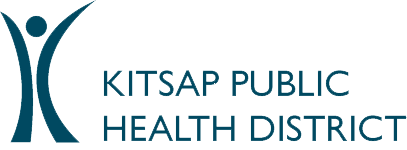Pertussis activity remains high in Kitsap County and Washington state, especially among school-aged children.
ACTIONS REQUESTED:
THINK of pertussis in anyone with these symptoms, regardless of vaccination history:
- A cough of any duration in a person who has been notified of a close exposure to pertussis,
- A paroxysmal cough of any duration, with whooping, post-tussive vomiting/gagging or apnea, or
- A persistent cough of unknown etiology, lasting more than seven days.
TEST for pertussis
Based on the guidance in the table, collect a specimen using a nasopharyngeal (NP) swab, wash or aspirate for PCR or culture. Collect serum for IgG.
- Do not test if symptoms are not present. It is unlikely that B. pertussis can be recovered through testing if the patient is not experiencing symptoms.
| Test | Timing of specimen collection | Test result interpretation |
| PCR (results within 24-96 hours) | Best if collected within first 2-3 weeks of cough. PCR will detect non-viable organisms present, even in persons who have been treated with antimicrobials; however, false negatives can occur and are more common later in the illness. | (+) Positive: Confirms B. pertussis if clinical and/or exposure history support the diagnosis of pertussis. (-) Negative: Does not rule out B. pertussis infection. Consider clinical presentation. |
| Culture (results can take up to 10 days) | Best if collected within first 2-3 weeks of cough. Recovering the organism is unlikely beyond 3 weeks of cough or in patients who have received antimicrobials. False negatives are common even early in the illness. | (+) Positive: Confirms B. pertussis infection. (-) Negative: Does not rule out B. pertussis infection. Consider clinical presentation. |
TREAT and report suspected and confirmed cases
- Healthcare providers and laboratories report cases to Kitsap Public Health District within 24 hours.
- Use Azithromycin, Erythromycin, Clarithromycin, or Trimethoprim-Sulfamethoxazole for treatment. If 21 days have already elapsed since cough onset, treatment is not recommended, as it will not improve outcome.
- Prescribe antimicrobial prophylaxis (same regimen as treatment) to persons who are household contacts or high-risk contacts of the pertussis case.
- High-risk contacts include infants less than 1 year of age, pregnant persons, other immunocompromised people, and those who have contact with high-risk people.
- Asymptomatic contacts receiving prophylaxis should not be excluded from their usual activities.
- Symptomatic contacts should be evaluated for pertussis.
- Please see the table below from the Washington State Department of Health for recommended antimicrobial treatment and post-exposure prophylaxis for pertussis, by age group.
- Call the Kitsap Public Health District at 360-728-2235 if you have questions.
STOP transmission
- Inform patients with suspected pertussis to stay at home and avoid close contact with others until they have:
- Completed the fifth day of an appropriate antibiotic OR
- Had cough symptoms for at least 3 weeks. (Cases are potentially infectious for the first 3 weeks of cough.)
Guidance adapted from the Minnesota Department of Health.

ADDITIONAL RESOURCES
- Pertussis Clinical Features | CDC
- Best Practices on the use of PCR for Diagnosing Pertussis | CDC
- Administering Diphtheria, Tetanus, and Pertussis Vaccines | CDC
CONTACTING THE HEALTH DISTRICT
- Call: 360-728-2235 and leave a message. Includes reporting notifiable conditions 24 hours a day, 7 days a week. Leave the patient’s name, date of birth and disease.
- Fax: 360-813-1168
